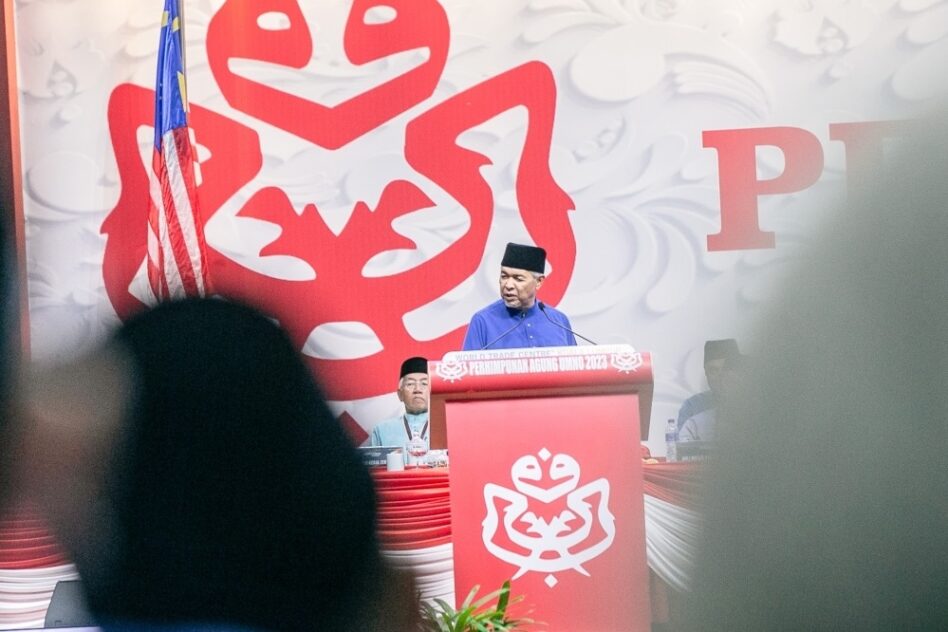By Akhbar Satar
SOCIETAL corruption refers to any wrongdoing involving monetary implications, which has become an acceptable practice affecting society or the community.
It has the tendency to spread like cancer, tempting others, and is a major obstacle to a country’s political and economic development and to a better future.
Unfortunately, public awareness hinges only on what is reported in the public domain. What about those that are not reported?
In the corporate world, some 70% of fraud cases are not reported and this is because companies do not want to have a negative impact on their brand name, including lost productivity, reputational damage, attending court cases and the related loss of business.
Due diligence must be conducted by employers to avoid employing criminals in their organisations.
The issue of integrity is not peculiar to Malaysia only; rather it is a global phenomenon.
Integrity crisis
A few years ago, in a survey conducted by Forbes.com, 38% of teenagers polled felt that they needed to cheat in order to get ahead.
According to Transparency International (TI), the integrity crisis in the Asia-Pacific indicates that 66% of youths would accept bribes if given the opportunity.
A similar scenario is observed among Malaysian university students.
In a study conducted by Universiti Kebangsaan Malaysia, 30.5% of students said they were open to accepting bribes if they have power and opportunity.
This is supported by data from the Malaysian Anti-Corruption Commission (MACC).
Today, they are in the system working in the public and private sectors or as politicians.
Based on statistics from 2014 until June 2019, 4,860 individuals had been arrested for corruption; 2,594 or 53.4% were aged below 40.
This data shows that over 50% of those involved in corrupt practices are young people and this issue must be viewed seriously as they will be our future leaders.
The practice can be detrimental to the country as it affects the integrity of the country’s administrative system and worse, if it becomes a culture among the young generation or the millennials.
The duty of the youth is to fight against corruption.
A holistic measure must be undertaken to find the root cause and prevent such immoral acts, especially among the younger generation.
Losses from corruption
The costs of corruption in terms of economic, political and social development are becoming increasingly evident. World Bank estimates show that the cost of corruption equals more than 5% of global gross domestic product or US$2.6 tril (RM10.55 tril), with more than US$1 tril paid in bribes each year.
The 2018 Association of Certified Fraud Examiners Report to the Nations (2018 ACFE) revealed that 5% of an organisation’s revenue was lost to fraud, while each country lost about 4% of its gross domestic product to fraud.
Corruption in Malaysia last year cost the country RM47 bil – about 4% of the county’s gross domestic product and nearly double what it spent on healthcare for the entire nation.
The Global Economic Crime and Fraud Survey 2018 Malaysia report indicated that 41% of the Malaysian sample companies had experienced an increase in economic crime in the last two years.
Procurement fraud
Based on complaints received by the MACC between 2013 and 2018, civil servants make up 46.3% of those arrested for corruption-related offences. The wrongdoing involving procurement was about 42.8%, topping the list of sectors prone to corruption.
However, the World Bank estimated that 20%-30% of the budget for public contracts is wasted. This finding matches that of the Auditor-General’s Department, that up to 30% of Malaysia’s public projects’ value was lost owing to mismanagement and corruption.
Consider the savings the government would have gained if it paid 30% less for goods and services that the contractors and vendors provide.
The procurement procedures need effective controls to achieve transparency, accountability and avoid the risk of fraud and irregularities.
Monitoring and evaluating the procurement processes and procedures need a high level of attention to ensure that the processes do not fall prey to fraud and corruption. Continuous monitoring is important as this will establish that the compliance, integrity and ethical standards that are in place are effective.
Mechanism of fraud
The fraud diamond theory puts forward four causes of fraud – opportunity, pressure, rationalisation and capability.
People holding high positions in an organisation would have the authority and managerial skills, as they are normally highly educated.
The higher the perpetrator’s level of authority, the greater fraud losses tend to be.
For example, the CEO may influence decision-making on behalf of the company.
He would have the opportunity to choose the parties to deal with.
Opportunity, coupled with financial stress, pressure from spouse and political pressure on the part of the CEO, could lead to fraud.
Being intelligent, the CEO would be able to provide justification for his actions such as ‘everybody is doing it’ or ‘top management is doing it as well.’
By applying the fraud diamond theory in order to address the gaps in societal corruption, the elements of opportunity, pressure and capability may help us understand the wrongdoers’ mind as they commit fraud.
The theory is also supported by the findings of a survey conducted by the 2018 ACFE as follows:
1) Age
The highest percentage of perpetrators is in the 36-45 age group.
But the greatest loss comes from perpetrators aged more than 60. Most losses are caused by individuals aged between 56 and 60.
One possible explanation is that top management positions have unlimited power with easier access to the organisation’s assets. The pressure is felt by the younger generation, but a bigger opportunity is available to the more experienced older people.
2) Work tenure
The opportunity can also be influenced by the tenure of the employees holding key positions in the organisations.
In this regard, the 2018 ACFE report highlighted that losses increase with the tenure of the organisation’s key personnel.
Fraud has been committed by employees working in an organisation for between one and five years. The most significant fraud losses are caused by those who have more than 10 years’ of working experience.
The longer the fraud lasts, the greater the financial damage it will cause.
3) Hotlines and reporting mechanisms
The most common detection method in our study was tips from employees, accounting for 54%.
Of these, 17% was from anonymous sources but organisations that had reporting hotlines were much more likely to detect fraud through tips.
Whistleblowers are most likely to report to supervisors 28% of the time, executives 21%, co-workers 13% and board or audit committee 13%.
The current fraud cases suggest there are weaknesses in attitude and mindset, monitoring and control, and enforcement and prosecution.
4) Prevention
Hence, it is time to put a stop to this corrupt practice, which is indeed a huge challenge for the current Pakatan Harapan (PH) government with Malaysia moving towards becoming a developed nation by 2030.
The practice can be detrimental to the country as it affects the integrity of the country’s administrative system and worse, if it becomes a culture among the young generation or the millennials.
To address these, there must be continuous enhancement in organisations and societies. – Jan 10, 2020
Datuk Seri Akhbar Satar holds the professorial chair at Institute of Crime and Criminology, HELP University and is president of the Malaysian Association of Certified Fraud Examiners









